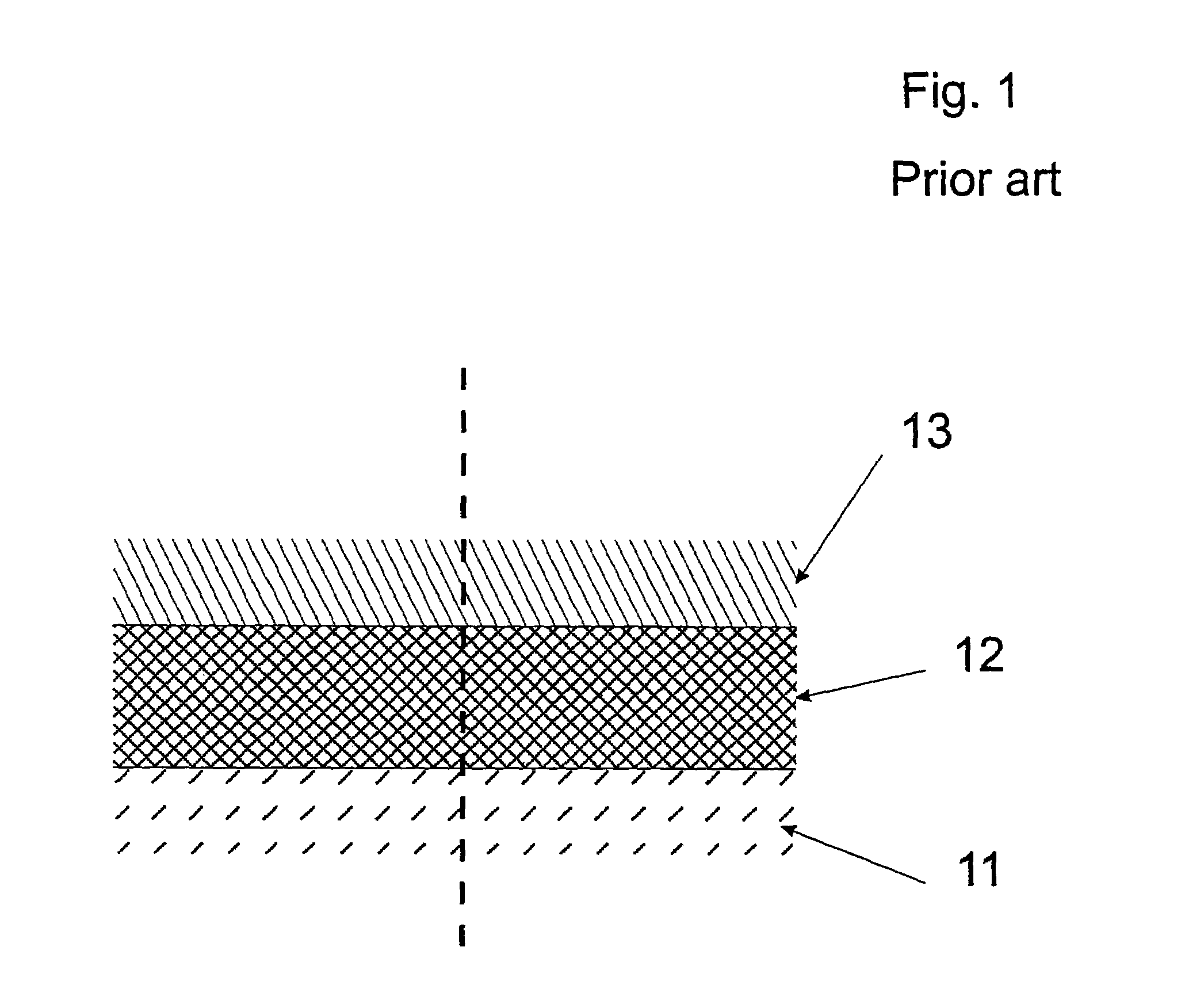Insulating barrier, NVM bandgap design
a technology of insulating barrier and band gap, which is applied in the direction of transistors, nanotechnology, electrical devices, etc., can solve the problems of compromising long-term data retention, difficult to construct barriers, and aln is not a suitable material for constructing such barriers, so as to reduce energy barriers, increase dielectric constant, and strengthen voltage dependence
- Summary
- Abstract
- Description
- Claims
- Application Information
AI Technical Summary
Benefits of technology
Problems solved by technology
Method used
Image
Examples
first embodiment
[0040]Referring to FIG. 7, there is shown the insulating barrier. The insulating barrier 20 extends between a first conductive region 21 and a second conductive region 25 and comprises first, second and third layers 22, 23 and 24, which are formed on top of each other. The first and third layers 22 and 24 are preferably constructed in a first dielectric material having a low dielectric constant. The second layer 23 is substantially wider than the first and third layers 22 and 24 and is constructed in a second dielectric material having a higher dielectric constant than the first dielectric material.
[0041]The first and second dielectric materials are chosen such that the insulating barrier 20 has a energy band diagram as shown in FIG. 8, when no voltage is applied over the barrier, and as shown in FIG. 9, when the tunnelling voltage is applied over the barrier. In order to achieve the profile shown in FIG. 8, the first and second dielectric materials are chosen such that they have su...
second embodiment
[0074]Referring to FIGS. 18, 19 and 20, a third memory device is shown. In this memory cell, the writing is done by means of hot electron injection, such as is for example known from the HIMOS™ cell which is described in U.S. Pat. No. 5,583,810. However, the interpoly dielectric between the control gate 57 and the floating gate 55 of the HIMOS™ cell is replaced by an insulating barrier 56 according to the invention as shown in FIG. 11, with the first layer 22 of dielectric material having a high dielectric constant contacting the floating gate 55. This replacement leads to a certain number of important improvements in the operation of the memory cell of FIGS. 18, 19 and 20 with respect to the HIMOS™ cell.
[0075]The erasing of the HIMOS™ cell is done by tunnelling of the charge carriers between floating gate and control gate. This tunnelling can either be Fowler-Nordheim tunnelling or tunnelling through a polyoxide where asperities of the underlying layer enhance the electric field an...
PUM
 Login to View More
Login to View More Abstract
Description
Claims
Application Information
 Login to View More
Login to View More - R&D
- Intellectual Property
- Life Sciences
- Materials
- Tech Scout
- Unparalleled Data Quality
- Higher Quality Content
- 60% Fewer Hallucinations
Browse by: Latest US Patents, China's latest patents, Technical Efficacy Thesaurus, Application Domain, Technology Topic, Popular Technical Reports.
© 2025 PatSnap. All rights reserved.Legal|Privacy policy|Modern Slavery Act Transparency Statement|Sitemap|About US| Contact US: help@patsnap.com



